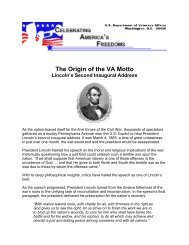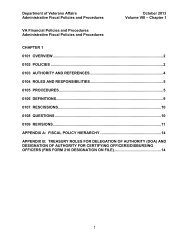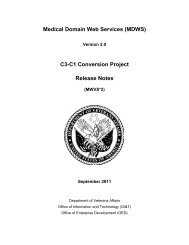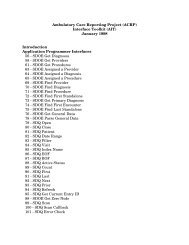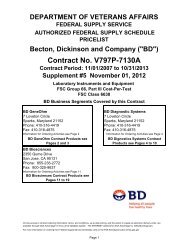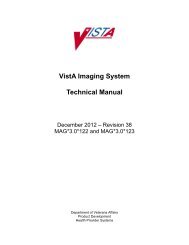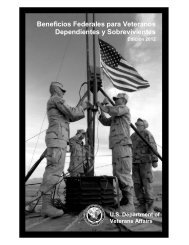Optimal Temperature for Cardioplegia During Coronary Artery ...
Optimal Temperature for Cardioplegia During Coronary Artery ...
Optimal Temperature for Cardioplegia During Coronary Artery ...
Create successful ePaper yourself
Turn your PDF publications into a flip-book with our unique Google optimized e-Paper software.
OPTIMAL TEMPERATURE FOR CARDIOPLEGIA FINAL REPORT<br />
Fremes, 2000<br />
(late results of<br />
“warm heart<br />
trial”)<br />
Total subjects: 762 recruited from one warm<br />
heart trial center were followed <strong>for</strong> late events:<br />
• Warm and cold groups compared <strong>for</strong><br />
demographic, angiographic, operative, and<br />
outcome variables (late death including<br />
perioperative deaths in this study)<br />
Rashid, 1994 Total subjects: 281:<br />
• Intermittent cold blood cardioplegia: n =<br />
144 antegrade delivery (28°C)<br />
• Continuous warm blood cardioplegia: n =<br />
137 (37°C) initially antegrade then switched to<br />
retrograde<br />
Yau, 1993 Total subjects: 53 elective CABG by a single<br />
surgeon:<br />
• Warm blood (37°C) continuous cardioplegia<br />
infusion, systemic temperature allowed to drift<br />
to30-32°C<br />
• Cold blood (5°C) intermittent cardioplegia with<br />
terminal “hot shot” and systemic cooling to 25-<br />
28°C<br />
Randomization by computer-generated table<br />
Baseline variables:<br />
• Similar between warm and cold cardioplegia groups, except <strong>for</strong> excess of preoperative hypertension in<br />
warm group<br />
Operative variables:<br />
• Excess of re-operation in cold group<br />
Actuarial survival:<br />
• Significantly increased in warm group at 6 years after surgery when redo patients excluded from<br />
analysis<br />
• Increased risk of late death associated with: redo CABG; diabetes mellitus; renal insufficiency;<br />
increased age<br />
• Protective against late death: use of left internal thoracic artery; female sex<br />
• Use of warm cardioplegia did not significantly influence late survival in multivariate analysis when<br />
adjusted <strong>for</strong> other covariates<br />
• Late survival significantly reduced after ECG-defined MI and LOS<br />
• Nonfatal enzymatic MI does not significantly influence late survival<br />
No significant differences between groups in mortality, peri-operative MI, blood loss, post-operative<br />
neurologic deficit, need <strong>for</strong> care, non-fatal post-op complications, or hospital stay<br />
Warm group:<br />
• Sinus rhythm returned spontaneously with significantly greater frequency<br />
Cold group:<br />
• Greater transmyocardial oxidative stress<br />
• Serum CK-MB isoenzyme significantly higher at 2 hours post-operative (but difference disappeared by<br />
next day)<br />
Conclusions:<br />
• Continuous warm blood cardioplegia provides comparable protection to that achieved with<br />
standard hypothermic techniques<br />
• No significant differences between groups in pre- and intra-operative variables<br />
• Warm cardioplegia delivered <strong>for</strong> 60% of cross-clamp period, cold <strong>for</strong> 28% (significant difference, p<br />
=0.009)<br />
• One patient in cold group had deep sternal infection and died on postoperative day 22<br />
• One patient in warm group and two in cold group had perioperative MI (NS)<br />
• 3 patients in cold group had low output syndrome (p =0.07)<br />
• Systemic temperatures still higher in warm group at 3 hours after operation<br />
• No clinically or statistically significant differences in adenine nucleotides or degradation products<br />
Warm group<br />
• Greater volumes of cardioplegic solution and higher peak serum potassium concentration<br />
• Greater myocardial lactate production<br />
• Improved recovery of oxygen consumption during reperfusion<br />
• Total adenosine nucleotides fell further<br />
• Creatine kinase MB isoenzyme release reduced<br />
• 3 hours after operation, end-systolic elastance, pre-load recruitable stroke work index, and early<br />
VA OPCS Technology Assessment Program http://www.va.gov/vatap 16





